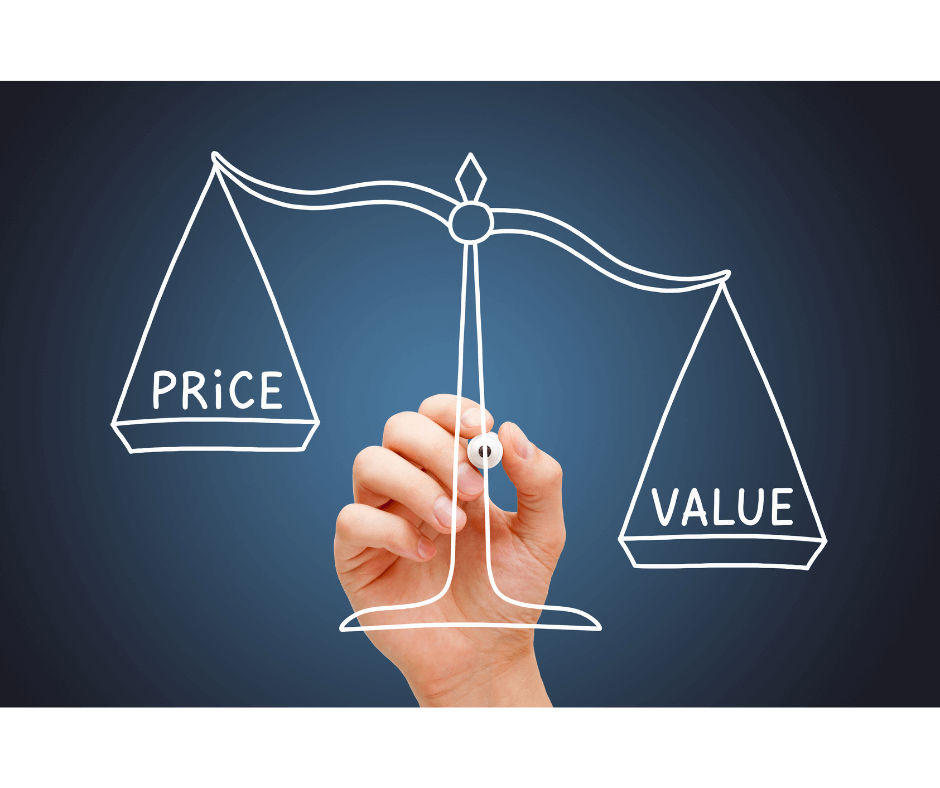
The holiday season is drawing near and sellers are busy brewing new pricing strategies. If you’re wondering what to look for when choosing an Amazon repricer, we could think of at least 3 key elements.
Amazon shoppers are known for their thriftiness. For nearly half of them, low prices were the main reason for shopping on Amazon in 2021, Statista claims. This year, with people feeling “the pinch of inflation”, it’s even more important to know what to look for when choosing an Amazon repricer.
Pricing affects an item’s perceived value and serves as a reference point for a buying decision. But it’s also the most effective way for Amazon sellers to boost profit. According to AscensionCPA, raising your price by 1% can yield nearly 3 times as much profit as raising your volume by 1%.
To reprice quickly and efficiently on Amazon, most sellers rely on automated repricers. But new and small sellers are hesitant. That’s mainly due to misconceptions about the limitations of this type of software. In fact, an Amazon repricer is suitable for any one of these pricing strategies:
- Premium pricing, where you charge more than competitors for your higher-quality item.
- Penetration pricing, where you introduce items at low prices and gradually raise them.
- Price skimming, where you charge a premium at first, but gradually lower the price.
- Mark-up or cost-plus pricing, where you add a desired percentage to cover costs.
- Value-based pricing, where you set prices based on the buyer’s maximum budget.
- Competitor-based pricing, where you match your competitor’s price (parity pricing) or go slightly lower (undercutting It’s a technique many sellers u… More).
The 3 Basic Repricing Elements of an Amazon Repricer
Not all Amazon repricers are made equal. To serve you well, Amazon repricing software must come with sound algorithms and tried-and-tested rules. It should also have a blueprint for its profit estimates based on costs, margins, and markups. Here’s what to look for in an Amazon repricer:
Cost Calculation
Most days, you’ll probably want to base your prices on what it costs you to sell your items. But cost is an elusive concept. Aside from Amazon’s referral, fulfillment, and high-volume listing fees, you may need to budget for many other fixed and variable costs when you set your prices.
We mentioned most of these extra charges in our blog post titled “10 Hidden Costs of Selling on Amazon”. But you may also like to factor in return costs that are specific to your business model, such as removal fees, coupon redemption fees, or Inventory Placement Service fees.
A clever repricer like Sellery will automatically sum up costs like Amazon fees and inventory costs. It calculates them based on the fulfillment channel, venue, supplier, and weight of your item. These figures are always up-to-date. Official cost changes are reflected in the profit estimate within hours.
What’s more, Sellery enables users to tweak these costs. So, you can easily factor in overheads, overage fees, VAT, and other costs that are not already included. One way is to insert your new cost total in the appropriate column for every item one-by one. The other is to upload a spreadsheet.
Margin Setting
In layman’s terms, the margin is what you sell an item for (list price) minus what it cost you to sell it. In Sellery, you can define this as a percentage of your pre-set minimum price (which ideally covers all your costs). You can go as high as 70%, if you wish, and tweak it as needed.
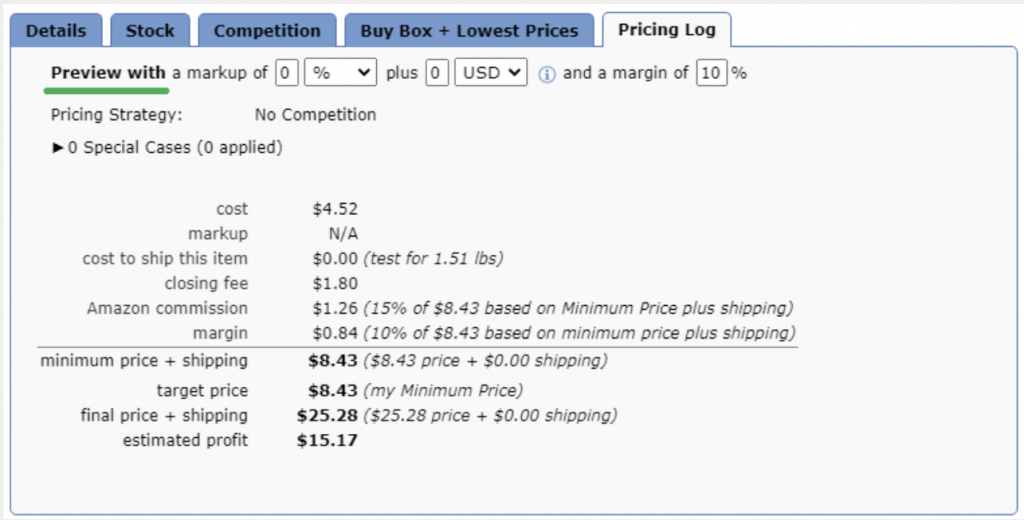
Rest assured, Sellery will keep this margin up for as long as you want, so you can count on this profit. This type of price change is consistent with premium-pricing, value-based pricing, penetration pricing, and other strategies where the focus isn’t to undercut competitors.
Markup Selection
A markup is similar to the margin, but it’s not based on your selling price. Instead, it’s a percentage of your total cost. Unlike margins, markups can go into negative figures. For example, you may want to offer a discount as part of your mark-up or cost-plus pricing strategy.
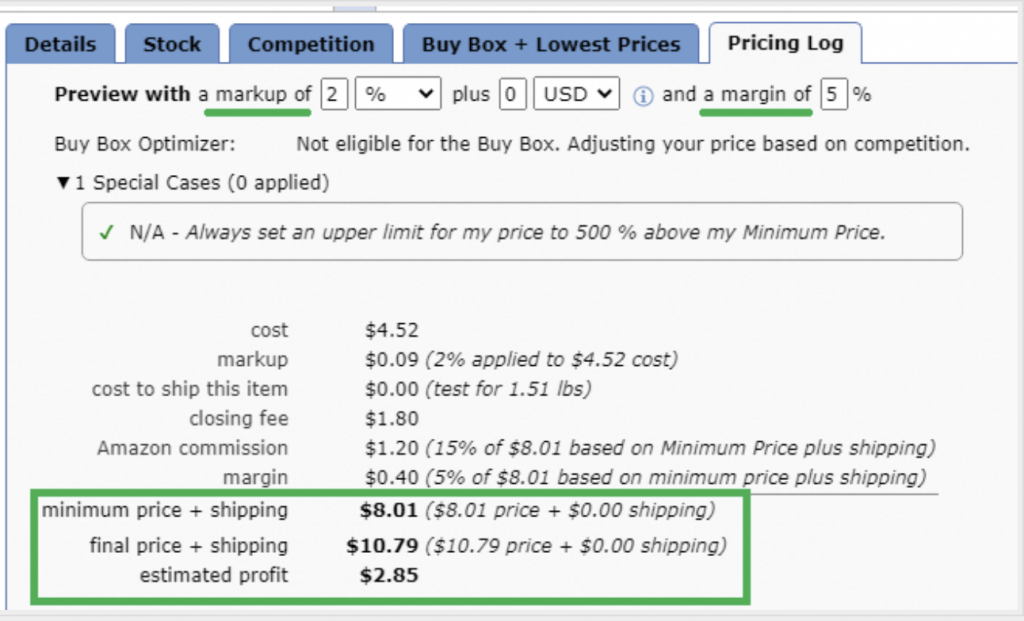
Sellery lets you change your markup at will. But it also warns you if a change brings you into negative profit territory. If you sell with a negative markup and still make a profit due to Sellery’s clever pricing rules, even better.
The Basics of a Reliable Repricing Algorithm
We’ve shown you what to look for when choosing an Amazon repricer that estimates your profit correctly. Let’s move on to other essential features that tie in with those 3 elements to ensure the success of a pricing strategy. Here’s what to look for in an Amazon repricer that maximizes sales and profits:
Buy Box Friendly
Most sales on Amazon go through the Buy Box. With Sellery, you can target the Buy Box for your item, whether it’s classified as ‘New’ or ‘Used’. Simply enter your discount to lower your list price, safe in the knowledge that even though the margin or markup are affected, you never sell at a loss because cost is already factored into Buy Box rules and exceptions.
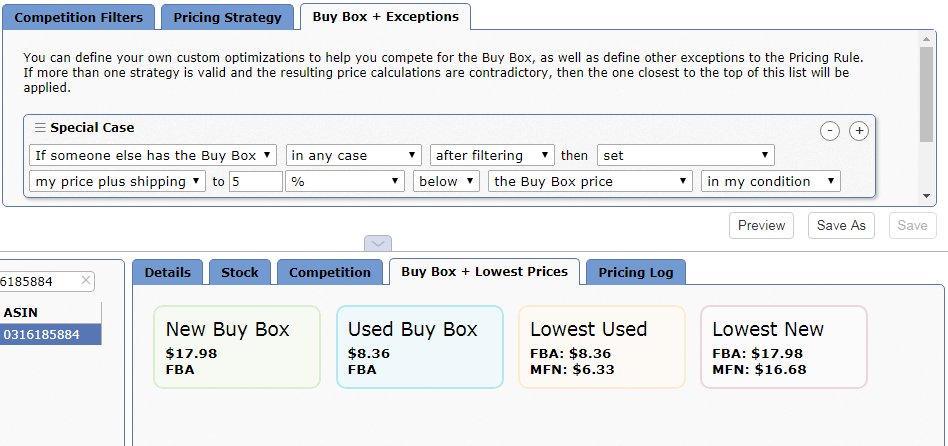
Item-Based
Repricing strategies only work if you can control which products they apply to. Sellery enables you to filter and group your items into Smart Lists. For instance, you can choose items that you list exclusively and set the listing price to twice as much as they cost you. This rule will bypass the 70% margin limit and your chosen markup, maximizing profits for you.
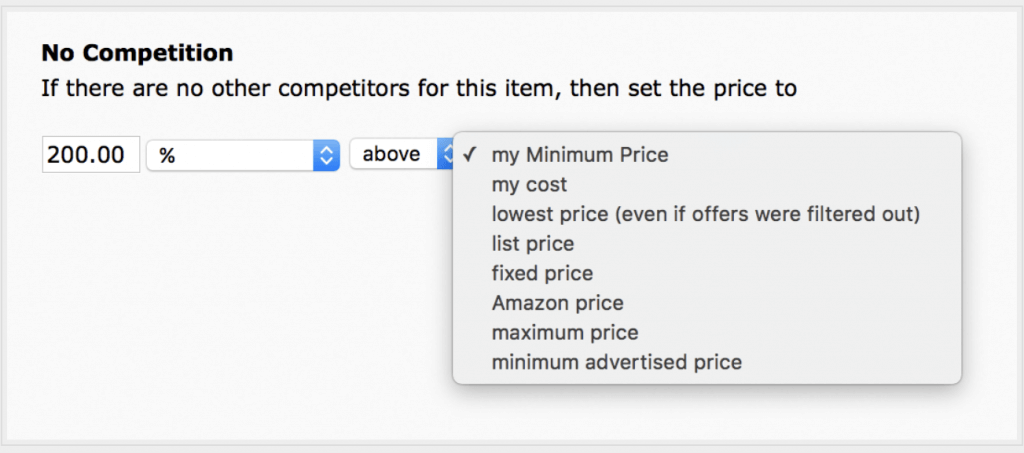
Time-Based
Sellery has the amazing capability to schedule a price change. So, if you know when your customers do most of their shopping, when they tend to go on holiday, or when your product’s about to be featured in ads, you can rely on scheduled repricing with Sellery. Adjust your margin and markup if needed, and then sit back and relax as demand for the product changes and Sellery swoops in.
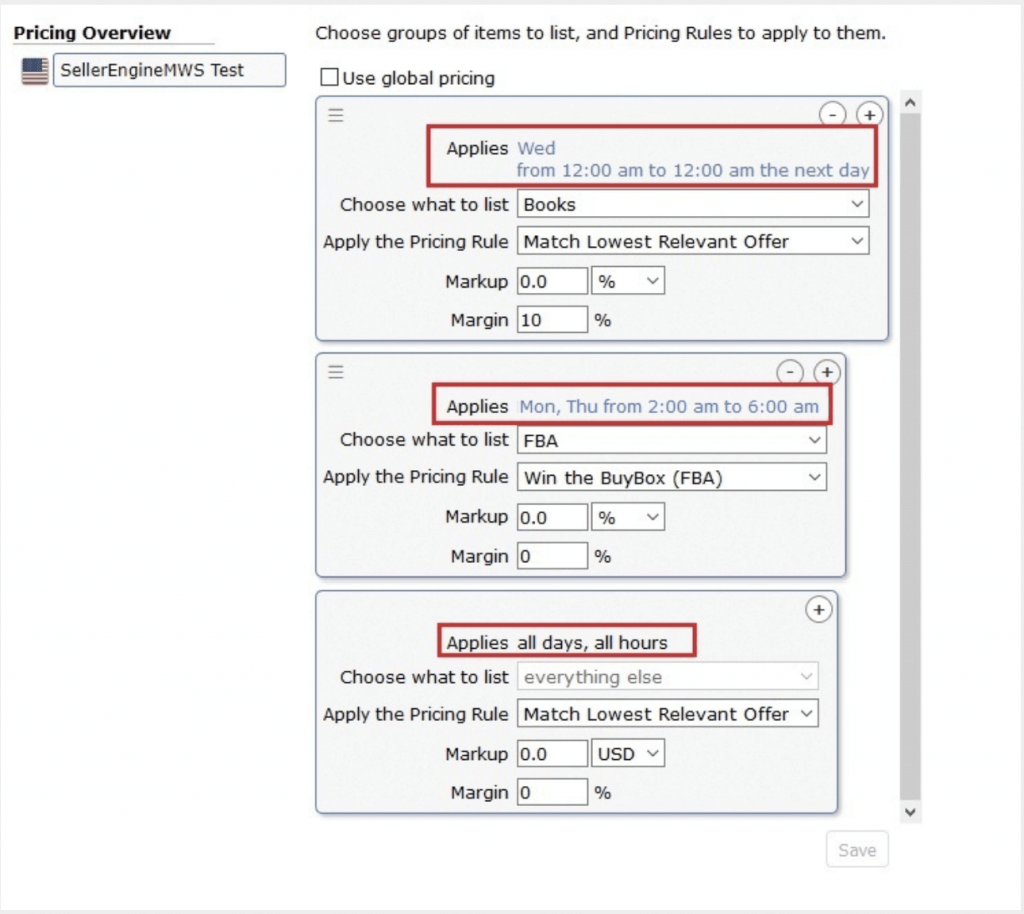
That’s about it for today’s run-through of what to look for when choosing an Amazon repricer. But before we wrap up, we want to make sure you’re ready to start off the holiday season on the right note with a repricer you can trust.
Sellery is the product of 2 decades’ worth of expertise in selling on Amazon. To mark this 20 year milestone, we’re offering you a free 2-week trial. Help yourself to an Amazon repricing software that’s helped hundreds of thousands of sellers grow their business on Amazon!
Win the Buy Box more often and accelerate sales

Melanie takes an active interest in all things Amazon. She keeps an eye on the latest developments and keeps Amazon sellers up to speed.





